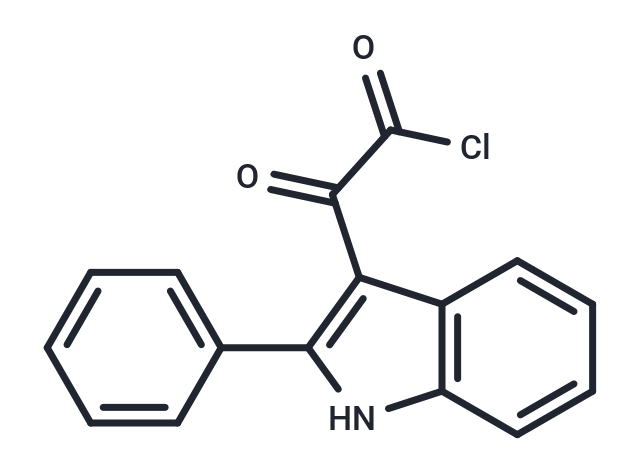 Your shopping cart is currently empty
Your shopping cart is currently empty

TSPO ligand-1 has affinity for peripheral and central benzodiazepine receptors.TSPO ligand-1 is an AUTAC4-binding protein in the transmembrane domain of the outer mitochondrial membrane, which induces mitochondrial autophagy and promotes intracellular mitochondrial regeneration.TSPO ligand-1 is involved in intracellular cholesterol transport, and can be used as a biomarker for brain injury and neurodegeneration. TSPO ligand-1 is involved in intracellular cholesterol transport and can be used as a biomarker for brain damage and neurodegeneration.

| Pack Size | Price | USA Warehouse | Global Warehouse | Quantity |
|---|---|---|---|---|
| 2 mg | $30 | - | In Stock | |
| 5 mg | $48 | - | In Stock | |
| 10 mg | $81 | - | In Stock | |
| 25 mg | $163 | - | In Stock | |
| 50 mg | $247 | - | In Stock | |
| 100 mg | $372 | - | In Stock | |
| 200 mg | $548 | - | In Stock |
| Description | TSPO ligand-1 has affinity for peripheral and central benzodiazepine receptors.TSPO ligand-1 is an AUTAC4-binding protein in the transmembrane domain of the outer mitochondrial membrane, which induces mitochondrial autophagy and promotes intracellular mitochondrial regeneration.TSPO ligand-1 is involved in intracellular cholesterol transport, and can be used as a biomarker for brain injury and neurodegeneration. TSPO ligand-1 is involved in intracellular cholesterol transport and can be used as a biomarker for brain damage and neurodegeneration. |
| In vitro | In the context of selective activation of neurons in male C57Bl6/N mice, the TSPO ligand-1 gene is induced to increase expression. Additionally, under both physiological and psychopharmacological conditions, neuronal activation leads to increased TSPO levels in adult mice[2]. As the sole marker of glial cell activity in Alzheimer’s disease, TSPO ligand-1 can track the formation of different neural cells[4]. In the MA-10 Leydig cell line, TSPO ligand-1 can regulate mitochondrial fatty acid oxidation (FAO) and thus affects mitochondrial energy homeostasis[3]. |
| Molecular Weight | 283.71 |
| Formula | C16H10ClNO2 |
| Cas No. | 4560-08-1 |
| Smiles | O=C(Cl)C(=O)C=1C=2C=CC=CC2NC1C=3C=CC=CC3 |
| Color | Yellow |
| Appearance | Solid |
| Storage | store at low temperature | Powder: -20°C for 3 years | In solvent: -80°C for 1 year | Shipping with blue ice/Shipping at ambient temperature. | |||||||||||||||||||||||||||||||||||
| Solubility Information | DMSO: 50 mg/mL (176.24 mM), Sonication is recommended. | |||||||||||||||||||||||||||||||||||
| In Vivo Formulation | 10% DMSO+40% PEG300+5% Tween 80+45% Saline: 2 mg/mL (7.05 mM), Sonication is recommended. Please add the solvents sequentially, clarifying the solution as much as possible before adding the next one. Dissolve by heating and/or sonication if necessary. Working solution is recommended to be prepared and used immediately. The formulation provided above is for reference purposes only. In vivo formulations may vary and should be modified based on specific experimental conditions. | |||||||||||||||||||||||||||||||||||
Solution Preparation Table | ||||||||||||||||||||||||||||||||||||
DMSO
| ||||||||||||||||||||||||||||||||||||
| Size | Quantity | Unit Price | Amount | Operation |
|---|

Copyright © 2015-2025 TargetMol Chemicals Inc. All Rights Reserved.